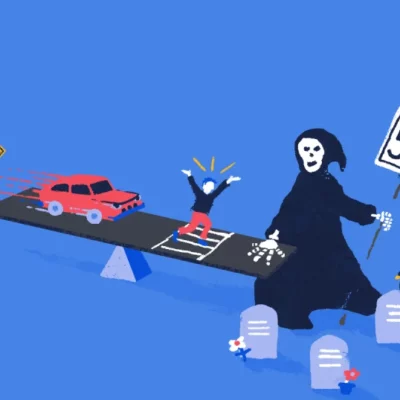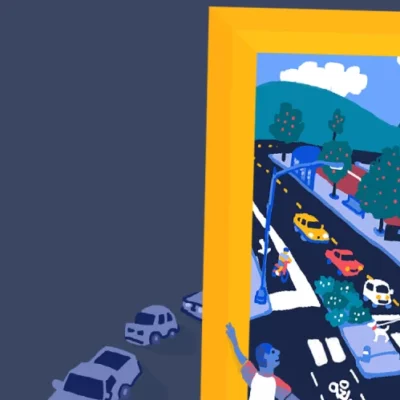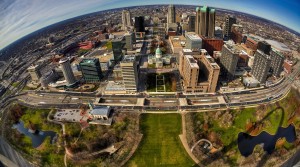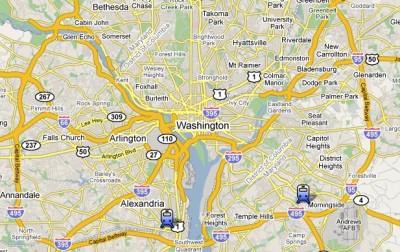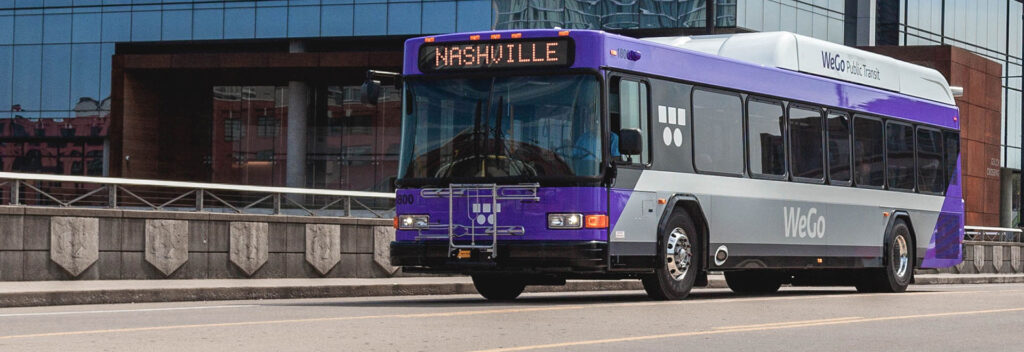
Planning for the future: Washington’s new Woodrow Wilson Bridge
 |
| A New Trail Originally uploaded by M.V. Jantzen. A bicyclist cruises along I-495/95 on the new Woodrow Wilson Bridge “active transportation lane,” leading to the rare sight of someone not in a car using the Capital Beltway. View more photos of the opening on Flickr from Eric Gilliland, director of the Washington Area Bicyclist Association (a T4 partner.) |
Two weekends ago, the 12-foot-wide bicycle and pedestrian lane of the Woodrow Wilson interstate bridge over the Potomac River held its grand opening in Washington DC, filling with bikers and walkers who can now join the thousands of cars that cross the bridge each day.
The bridge, which connects Virginia and Maryland on the southern part of the Capital Beltway, is a vital transportation link in the region, where Interstate 95 (and the large majority of truck traffic) bypasses Washington, continuing north or south along the eastern seaboard.
Hundreds of bicyclists enjoyed a ride across the bridge for the first time ever last weekend, and the renovations to the bridge also added dedicated space for a future transit line — not something you see everyday on an interstate bridge in the United States.
Building a new bridge to replace the 1961 bridge had been discussed for decades, but the planning kicked into high gear in the 1990’s, with Maryland, Virginia, and the federal government all engaged in the process (DC relinquished control to the states.)
Looking at a map of the Metrorail public transportation system, one can see that only a few miles separate the end of the green line in Maryland and the yellow and blue lines in Virginia. There was no active work to connect the two lines, but a handful of people in the planning process wondered about dedicating some space on the bridge for a future, useful Metro connection.
Parris Glendening, Governor of Maryland from 1995-2003, said that planning for a future transit connection was just common sense.
“Those stations are just a few miles apart as the crow flies, but no one in Maryland who has a choice is going to ride all the way up into DC to switch trains and ride all the way back out to Virginia — and end up only a few miles from where they started,” he said.
Gov. Glendening said they discovered that adding lanes for rail transit was more complex than simply adding more space. “Not only did we have to add space, but we had to account for the additional weight of heavy rail cars and the strong vibrations trains produce that cars do not,” he said.
As a result, the bridge got more expensive.
When the cost of the bridge went up, the feds said that regardless of how much money would be saved in the future by doing it right, the states had to bear the extra costs. When Virginia initially refused to pay more money, it appeared that the project might stall.
Gov. Glendening told us that he was widely pilloried for standing fast on the plan to include space for public transportation, and was accused by some of “threatening commerce in the region and guaranteeing gridlock.” With key Republican allies in Congress from Virginia who were thinking long-term, including Sen. John Warner and Rep. Tom Davis, and some help at the federal level, the federal and state governments were able to work out an agreement for the redesigned bridge.
As Governor Glendening noted, the point isn’t the higher upfront cost for the bridge. It’s that we’ll have to pay less over the long term.
“Think of the prospect of building an entirely new bridge one day to connect those metro lines — and how much more difficult and expensive it would be. When we begin planning the connection one day, think of how streamlined the process will be, knowing we already have dedicated space on this bridge for the connection.”
“We did it right the first time, perhaps paying more money up front to do so, but saving millions for our children and their children — and building something that will help reduce congestion, give people transportation options and serve the region for decades to come.”
The connections created in the bicycling and pedestrian network will pay large dividends over time. On the Virginia side, the Mt. Vernon Trail — which runs through Old Town Alexandria, past National Airport, and all the way up to Washington — is filled with commuters during the week and cyclists, rollerbladers, walkers and runners on the weekends. And National Harbor, just over the bridge on the Maryland side, is a new destination hotel, convention center, and retail center for the region.
| “We can’t simply add more lanes and build more interstates and expect to alleviate congestion and improve mobility in the region. We have to think outside the box and do something other than what got us into this traffic mess in the first place. Investing our transportation money into projects that can give people better transportation choices is a good place to start.” |
| — Former Maryland Gov. Parris Glendening |
One day, public transportation connections on the bridge will give an economic boost to the region as demand grows for high quality transit service, and new growth will be possible in those areas without choking the entire area with more traffic.
Citizens of Alexandria, National Harbor and the surrounding areas will increasingly have a wealth of transportation options from which to choose — including driving, walking, biking, and public transportation — which will save them money each year in transportation costs and shield them from the crippling effect of high gas prices.
People are generally supportive of spending more money on transportation infrastructure, but as Governor Glendening points out, people need to know that the money will buy us something useful.
“We can’t simply add more lanes and build more interstates and expect to alleviate congestion and improve mobility in the region. We have to think outside the box and do something other than what got us into this traffic mess in the first place. Investing our transportation money into projects that can give people better transportation choices is a good place to start. And the Wilson Bridge is a great example of doing it right.”
